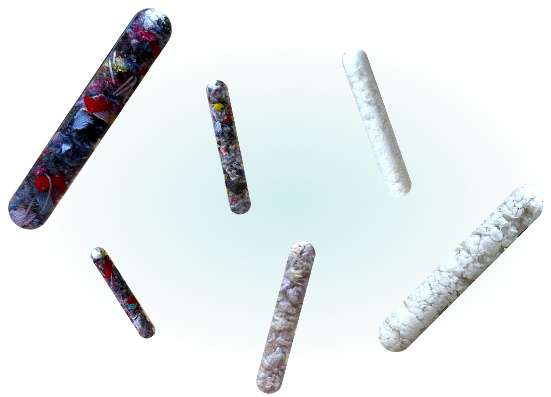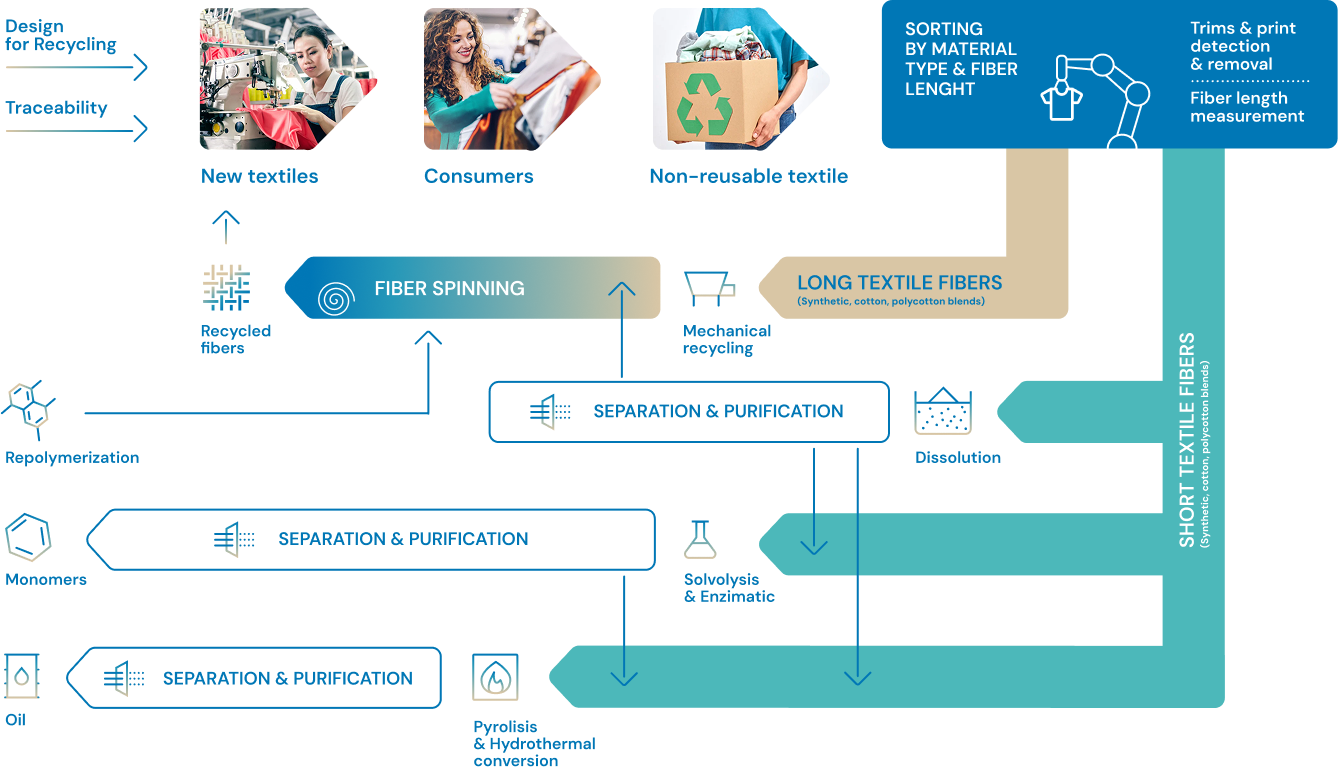The Project
STREP delivers a holistic solution that spans the full textile recycling value chain, integrating automated disassembly, design for recycling, and smart chemical processes. It’s designed to create circular, high-performance materials from non-mechanically recyclable textile waste.
STREP’s Vision
and Approach
STREPs mission is to allocate the right textile fibres to the right recycling flows, maximizing the value and minimizing the environmental footprint of every fibre.
This will be achieved through:
Advanced Sorting
Incorporates fibre length measurement, cost-efficient sensors, automated trim removal, and AI-driven self-learning
Smart Design
Develops guidelines for easier disassembly of complex, multi-layered textiles.
Mechanical Recycling Integration
Utilises sorted long fibres for producing high-quality recycled materials.
Targeted Chemical Recycling
Tailors processes to specific fibre types and lengths to enable closed-loop yarn production.
Objectives
Automate textile sorting and accessory removal
Maximize fibre recovery using chemical and enzymatic methods
Digitally track textile components from input to output
Provide scalable models for industrial circularity

STREP Actions Timeline
1
Requirements definition and tech scouting
2
Prototype and test integrated systems
3
Pilot demonstration at industrial sites
4
Data analysis, optimization, and scalability planning
Two of STREP’s breakthrough innovations focus on improving
textile sustainability before products even reach consumers:
Recyclability-by-Design
Guidelines
Development of a comprehensive design matrix to guide product designers in creating textiles that are easier to disassemble and recycle. This includes recycling-friendly construction techniques that minimize complex trims and incompatible materials.
Traceability and Circular Product Identity
Introduction of digital enablers such as RFID-based circular identification, digital product passports, and marketplace integration. These tools enable sorting of textiles into the right recycling streams, enhance transparency, and allow operational data collection for continuous improvement and customer engagement.
After textile waste is collected, STREP introduces several
advanced technological solutions:

The ultimate goal is to produce 100% closed-loop recycled yarns
exclusively from post-consumer textiles—striking a balance between
sustainability, cost-efficiency, and quality:
Sorting efficiency boost
Post-consumer recycled yarn
Accessory removal efficiency
